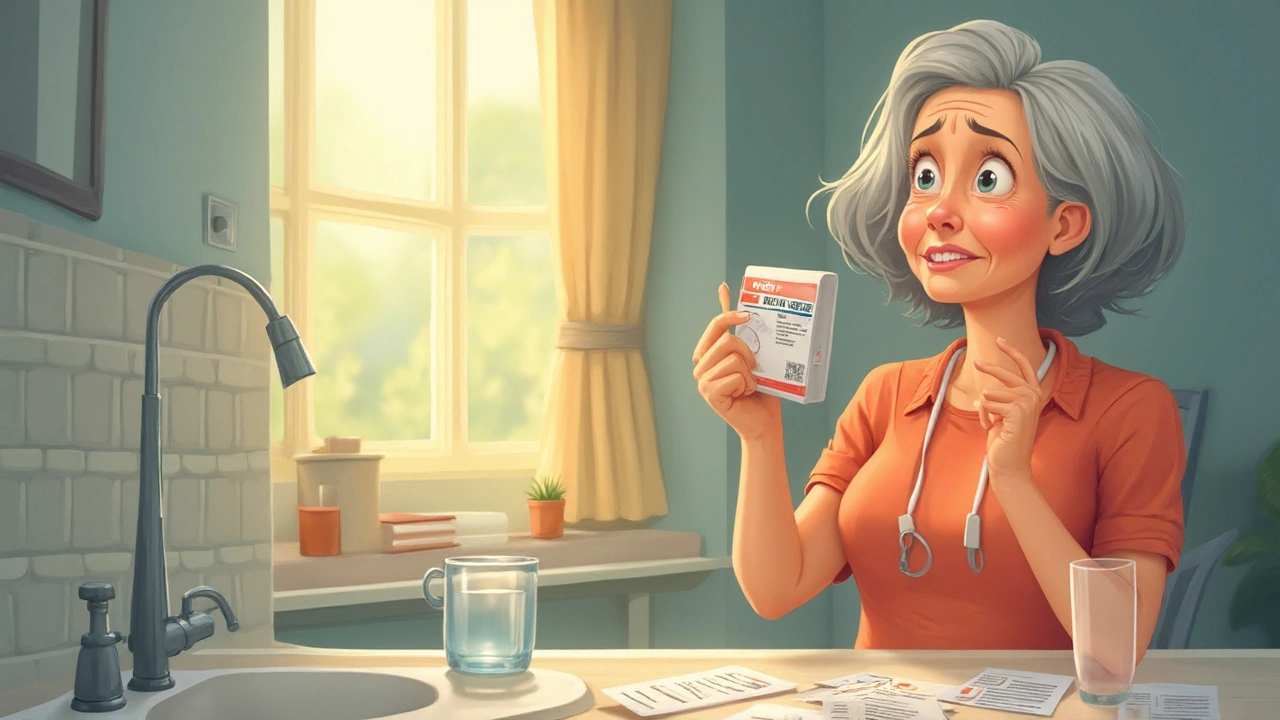Overactive Bladder – What It Is and How to Manage It
If you’re constantly running to the bathroom or waking up drenched in sweat, you might be dealing with an overactive bladder (OAB). It’s not just a sign of age; it’s a real condition where the bladder muscles contract too often, causing urgency, frequency, and sometimes leakage. The good news? Small changes in daily habits, a few exercises, and the right medicines can bring big relief.
Common Triggers and Lifestyle Tweaks
First, look at what’s making your bladder jumpy. Caffeine, alcohol, and sugary drinks can irritate the bladder lining, so cutting back often eases symptoms. Try swapping that soda for water or herbal tea and see if the urgency drops.
How much you drink matters, too. Drinking a lot right before bedtime leads to those dreaded night trips. Aim for a balanced fluid intake spread throughout the day and limit fluids two hours before sleep.
Weight can put pressure on the bladder. If you’ve gained a few pounds, a modest loss can reduce that pressure and lower the urge to go. Even a short walk after meals helps your body process fluids more efficiently.
Stress is another hidden culprit. When you’re anxious, your body releases hormones that tighten the bladder muscles. Simple stress‑busting techniques – deep breathing, short meditation, or a quick stretch – can calm both mind and bladder.
Treatment Options: From Exercises to Prescriptions
One of the strongest tools against OAB is the pelvic floor muscle exercise, often called Kegels. Tighten the muscles you’d use to stop a stream of urine, hold for three seconds, then relax. Do ten reps, three times a day. Over a few weeks, many people notice fewer leaks and less urgency.
Another easy trick is the “timed voiding” schedule. Instead of waiting for the urge, go to the bathroom every two to four hours. This trains the bladder to hold more urine and reduces sudden urges.
If lifestyle changes aren’t enough, over‑the‑counter options like bladder‑support supplements (containing pumpkin seed extract or magnesium) can help some users. For stronger relief, doctors may prescribe antimuscarinic drugs or beta‑3 agonists, which relax the bladder muscle.
When you should see a doctor: frequent nighttime trips (more than twice a night), sudden loss of control, or pain while urinating. These signs could point to infections, stones, or other issues that need professional care.
Bottom line: overactive bladder isn’t something you just have to live with. By tweaking drinks, watching fluid timing, strengthening pelvic muscles, and, if needed, using medication, you can regain control and cut down those extra bathroom trips. Start with one simple habit today, and you’ll notice the difference faster than you think.
Oxytrol patches help with overactive bladder symptoms like urgent urination and leaks. Learn how it works, application tips, who it's for, and potential side effects.

